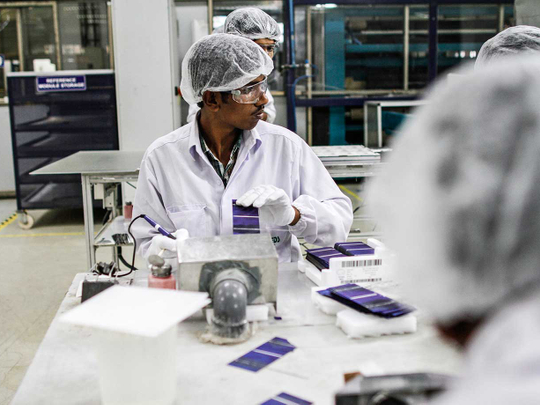
The events of the COVID-19 pandemic highlighted the risks of long-thin supply chains and the just-in-time approach to manufacturing. At the heart of this strategy has been China’s dominance as the world’s manufacturing hub. Beijing’s continued lockdowns continue to impact these supply chains, so the clamour for an alternative has been rapidly gaining favour. India is the key candidate to fill that role in an approach that’s been dubbed ‘China+1’. India’s inevitable rise In some ways, the swing of capital and investment from China towards India has looked inevitable. This has also clearly been exacerbated by the acute geopolitical events of this year; the Ukraine war and Chinese military drills around Taiwan. Cue India. India’s knowledge base and demographic advantages put it forward as the main alternative to China. With the backdrop of geopolitical tension, alternative supply chains has never been more important for Western companies. In fact, they have already begun to invest in India: Apple, for instance, recently announced it will manufacture the iPhone 14 in India, with the intention of producing 25 per cent of their devices outside China by 2025.
India has also been courting manufacturing companies to set up in the country. The Indian government has publicly stated its desire to step up the manufacturing value-chain, with incentives on the table for manufacturers to set up production facilities.
China’s self-sufficiency drive
More than $150 billion has already been spent on accelerating China’s chip industry, while 2021’s 14th ‘Five Year Plan’ sets out in detail China’s four pillars for greater self-sufficiency. Furthermore, the Chinese regime is acutely aware that the weaponization of the US dollar through the US sanctions regime leaves China at risk of being locked out of international payments. The country that is invoiced for almost 75 per cent of its receivables in US dollars.
India has leapt at the China+1 opportunity with gusto, announcing the ‘Make in India’ campaign to attract investment. The $10 billion in incentives for chip manufacturing for example has attracted interest from companies from Singapore to Israel. India’s distinct geopolitical advantages are only becoming more important. The more investment that is sunk into Indian investment, the more likely India will benefit long-term.
It’s happened before
We’ve seen shifts in global manufacturing bases in the past. First, with Japan, when it became a manufacturing powerhouse in the second-half of the 20th century and more recently in the rise of the Asian Tiger economies of Singapore, Taiwan and South Korea. While cost drivers were likely more prevalent, transitions away from these hubs were executed without much fanfare. However, none were as central to global manufacturing as China. The transition of activities towards India may actually mean there is a situation where the world maintains two key manufacturing hubs, India and China for a period of time. China+1 made live. Notwithstanding significant changes in the global regime, the current economics of globalisation dictate that eventually the cheapest manufacturing hub, in this case India, should win out. The coming demographic shifts in India – young, urbanising, and upwardly mobile – compared to China – older, urbanised, and with a developed middle-class – also supports a shift.













